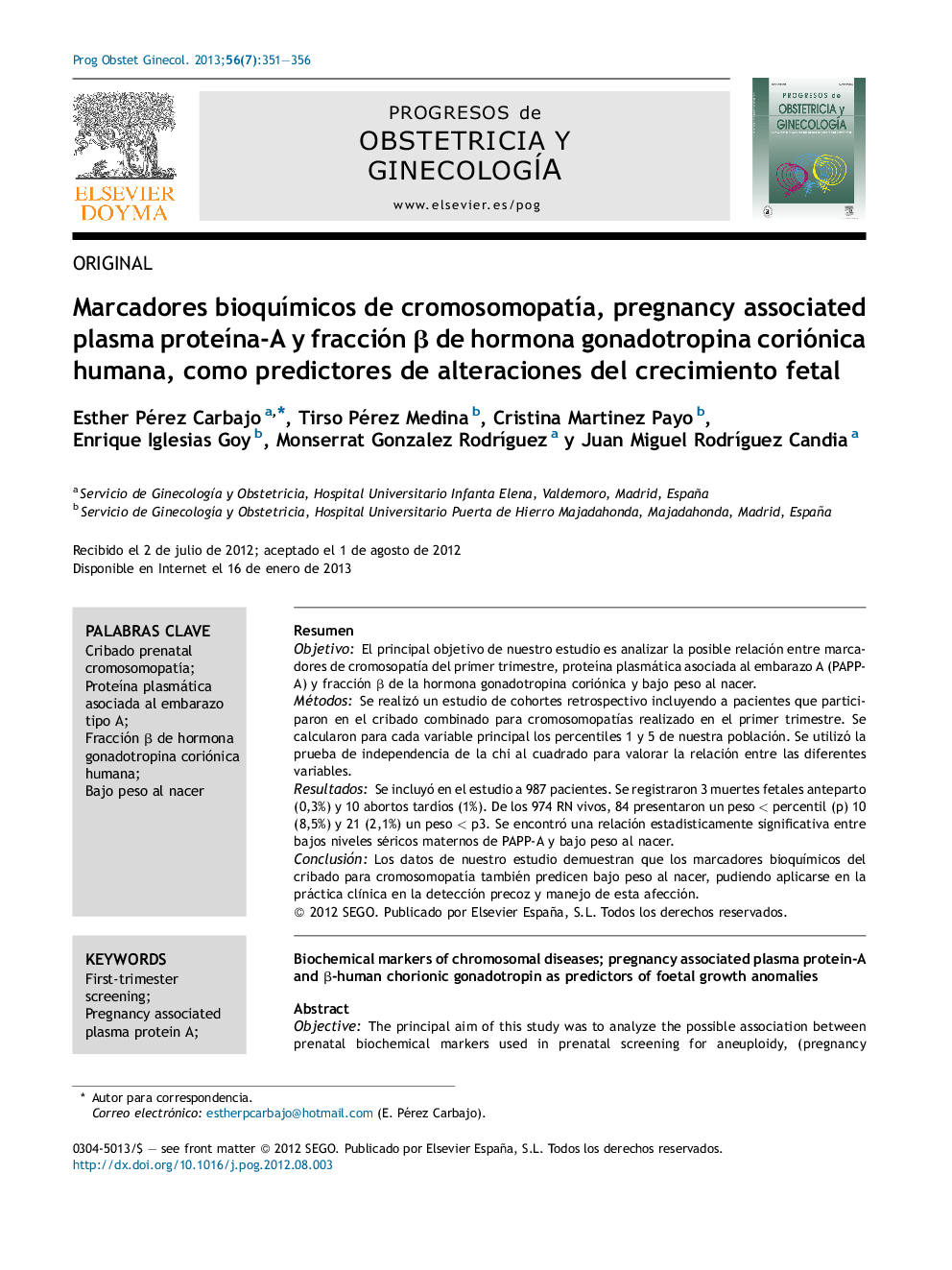| Article ID | Journal | Published Year | Pages | File Type |
|---|---|---|---|---|
| 3968570 | Progresos de Obstetricia y Ginecología | 2013 | 6 Pages |
ResumenObjetivoEl principal objetivo de nuestro estudio es analizar la posible relación entre marcadores de cromosopatía del primer trimestre, proteína plasmática asociada al embarazo A (PAPP-A) y fracción β de la hormona gonadotropina coriónica y bajo peso al nacer.MétodosSe realizó un estudio de cohortes retrospectivo incluyendo a pacientes que participaron en el cribado combinado para cromosomopatías realizado en el primer trimestre. Se calcularon para cada variable principal los percentiles 1 y 5 de nuestra población. Se utilizó la prueba de independencia de la chi al cuadrado para valorar la relación entre las diferentes variables.ResultadosSe incluyó en el estudio a 987 pacientes. Se registraron 3 muertes fetales anteparto (0,3%) y 10 abortos tardíos (1%). De los 974 RN vivos, 84 presentaron un peso < percentil (p) 10 (8,5%) y 21 (2,1%) un peso < p3. Se encontró una relación estadísticamente significativa entre bajos niveles séricos maternos de PAPP-A y bajo peso al nacer.ConclusiónLos datos de nuestro estudio demuestran que los marcadores bioquímicos del cribado para cromosomopatía también predicen bajo peso al nacer, pudiendo aplicarse en la práctica clínica en la detección precoz y manejo de esta afección.
ObjectiveThe principal aim of this study was to analyze the possible association between prenatal biochemical markers used in prenatal screening for aneuploidy, (pregnancy associated plasma protein A [PAPP-A] and beta-human chorionic gonadotropin) and low birth weight.MethodsWe performed a retrospective cohort study of patients who underwent first trimester screening for aneuploidies. The first and fifth percentiles in our population were calculated for each main variable. We used the chi-square test to assess the relationship between the distinct variables.ResultsA total of 987 patients were included. There were three stillbirths (0.3%) and 10 midtrimester miscarriages (1%). Of 974 live births, body weight was under the 10th percentile (p) in 84 (8.5%) and was under the third percentile in 21 (2.1%). There was a statistically significant association between low maternal serum PAPP-A and low birth weight.ConclusionOur results demonstrate that the biochemical markers used in prenatal screening for aneuploidy also predict low birth weight and can be used in clinical practice to provide an early diagnosis and improve the management of this entity.
